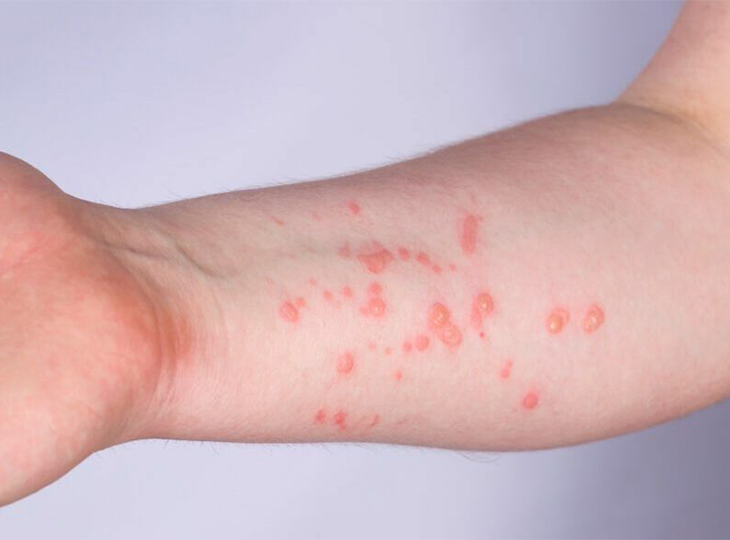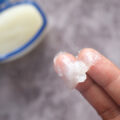Tues: 8:30am - 3:00pm
Wed: 12:00pm - 6:00pm
Thurs: 8:30am - 3:00pm
Fri: Closed
Sat: 8:30am - 12:30pm
Sun: Closed
Greenvale, NY 11548
Is that Monkeypox?


It’s hard to scroll through your newsfeed without finding some mention of monkeypox, a viral disease similar to smallpox. It causes flu-like symptoms such as fever and chills, and a rash that can take weeks to clear. The rash can initially look like pimples or blisters and may be painful or itchy. Precaution is always better than panic. Here’s what you need to know.
Monkeypox is a preventable disease that spreads through close contact with an infected person, especially sexual contact. As of this writing, one death related to monkeypox has been reported in the United States. It is unclear what role the virus played in the death of the patient in Texas, although the Texas Department of State Health Services in a statement reported that the adult was severely immunocompromised.
There are no treatments specifically for monkeypox virus infections. However, monkeypox and smallpox viruses are genetically similar, which means that antiviral drugs and vaccines developed to protect against smallpox may be used to prevent and treat monkeypox infections, according to the Centers for Disease Control.
Monkeypox is usually mild and typically resolves within two to four weeks. The rash goes through several stages, ending with pustules that eventually form a crust and fall off. Treatment is aimed at relieving symptoms with simple pain medicines such as aspirin and ibuprofen, and staying hydrated.
CDC Director Dr. Rochelle Walensky in a White House briefing in mid-August reported 13,500 cases of monkeypox in the United States, or more than a third of the world total of over 39,000 cases.
Confirmed monkeypox cases were identified across 49 states, as well as Washington, D.C. and Puerto Rico, she said.
Monkeypox case data reported to the CDC show that 98% of cases are occurring in men. Of the more than 6,000 cases that include data on race and ethnicity, nearly 35% are occurring among those who are white, 33% who are Hispanic, and nearly 28% occurring among those who are Black. The median age is 35. And among cases with known recent sexual history and gender, 93% were among men who reported recent sexual contact with other men.
Monkeypox symptoms
People with monkeypox get a rash that may be located on or near the genitals or anus and could be on other areas like the hands, feet, chest, face, or mouth. The rash will go through several stages, including scabs, before healing.
Other symptoms can include:
- Fever
- Chills
- Swollen lymph nodes
- Exhaustion
- Muscle aches and backache
- Headache
- Respiratory symptoms (sore throat, nasal congestion, or cough)
Patients may experience all or only a few symptoms. They may feel like they’ve got the flu before a rash appears.
Symptoms usually start within 3 weeks of exposure to the virus. If someone has flu-like symptoms, they will likely develop a rash 1 to 4 days later.
Monkeypox is contagious from the time symptoms start until the rash has healed, all scabs have fallen off and a fresh layer of skin has formed. This typically lasts up to four weeks.
If you notice a new or unexplained rash or other symptoms
Avoid close contact with other people, especially sex or being intimate with anyone, until you have been evaluated by a healthcare provider.
When you visit a healthcare provider in person, wear a mask.
With the number of monkeypox cases rising across the world, and descriptions of rashes from the virus varying from person-to-person, people may be worried that any new rash they see might be monkeypox. There have been news reports of people using their smartphones to take pictures and video of random strangers with a skin rash.
These are obviously unnecessary and extreme steps. Dermatologists warn against “monkeypox vigilantism” after a woman with a skin condition known as neurofibromatosis1 was filmed on the New York City subway in a Tiktok video that later went viral.
There are many skin bumps which can be totally normal yet resemble monkeypox, including acne, skin reactions to heavy metals, ingrown hairs or even eczema or psoriasis.
Viruses such as molloscum, commonly seen in children, and varicella virus, known as chickenpox in children and shingles in adults, may resemble monkeypox due to the similar appearance of vesicles, which are fluid-filled bumps.
Sexually transmitted infections including syphilis, herpes and genital warts can also present with red or raised bumps on the body.
Bacterial infections such as impetigo, as well as eczema or open wounds, can cause redness, inflammation and raised bumps on the skin. There are even genetic conditions such as neurofibromatosis which can cause longstanding skin growths.
How does monkeypox develop?
A monkeypox rash can appear anywhere and is almost always associated with systemic symptoms that resemble the flu. The rash moves through a common evolution, starting out flat then forming bumps filled with clear fluid or pus. The bumps gradually form scabs, become crusty then eventually dry up and fall off. Monkeypox is infectious until the rash is completely healed.
What should I do if I suspect someone else has monkeypox?
Chances are, they don’t. The responsible thing to do is maintain your distance. Accusing someone, especially a stranger, of having monkeypox is almost certainly going to create trouble. Do not come in physical contact with people who have a visible rash and you will be fine.
What should I do if I think I have monkeypox?
First, don’t panic. According to the CDC, if someone is concerned they have monkeypox they should contact a dermatologist who can perform a simple test by taking a sample of the lesion. This will determine if the person is truly infected with monkeypox or if it is some other condition. Regardless of what the specific diagnosis turns out to be, it’s wise to seek medical advice and treatment. Dermatologists also recommend good hand hygiene and maintaining a safe distance from others if you develop any sort of rash.
Until you have a diagnosis, avoid any skin-to-skin contact with other people and even pets. There has been at least one suspected case of monkeypox transmission from a human to a dog.
Let Walk-in Dermatology Take Care of You
If you have concerns about lesions or any skin condition and need dependable answers fast, you don’t have to wonder, worry or wait. Walk-in Dermatology is here to keep you healthy. Our team of dermatologists and experienced healthcare staff will address your concerns and provide the necessary care for all your skin conditions. We can set up a Video Visit and even prescribe medications remotely, or you can schedule an appointment with us online. The choice is yours. But don’t wait until the problem gets worse. Contact us today.








